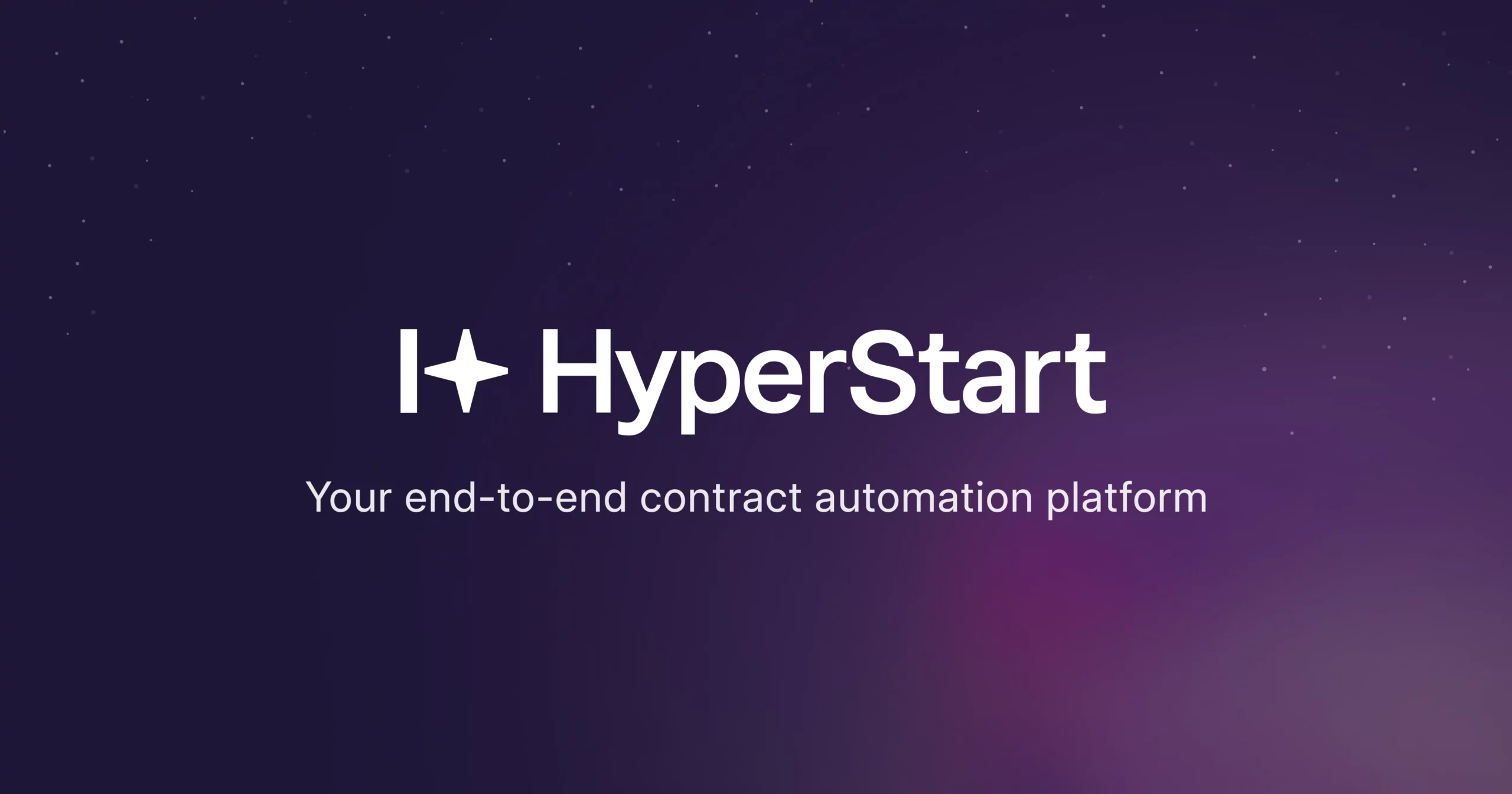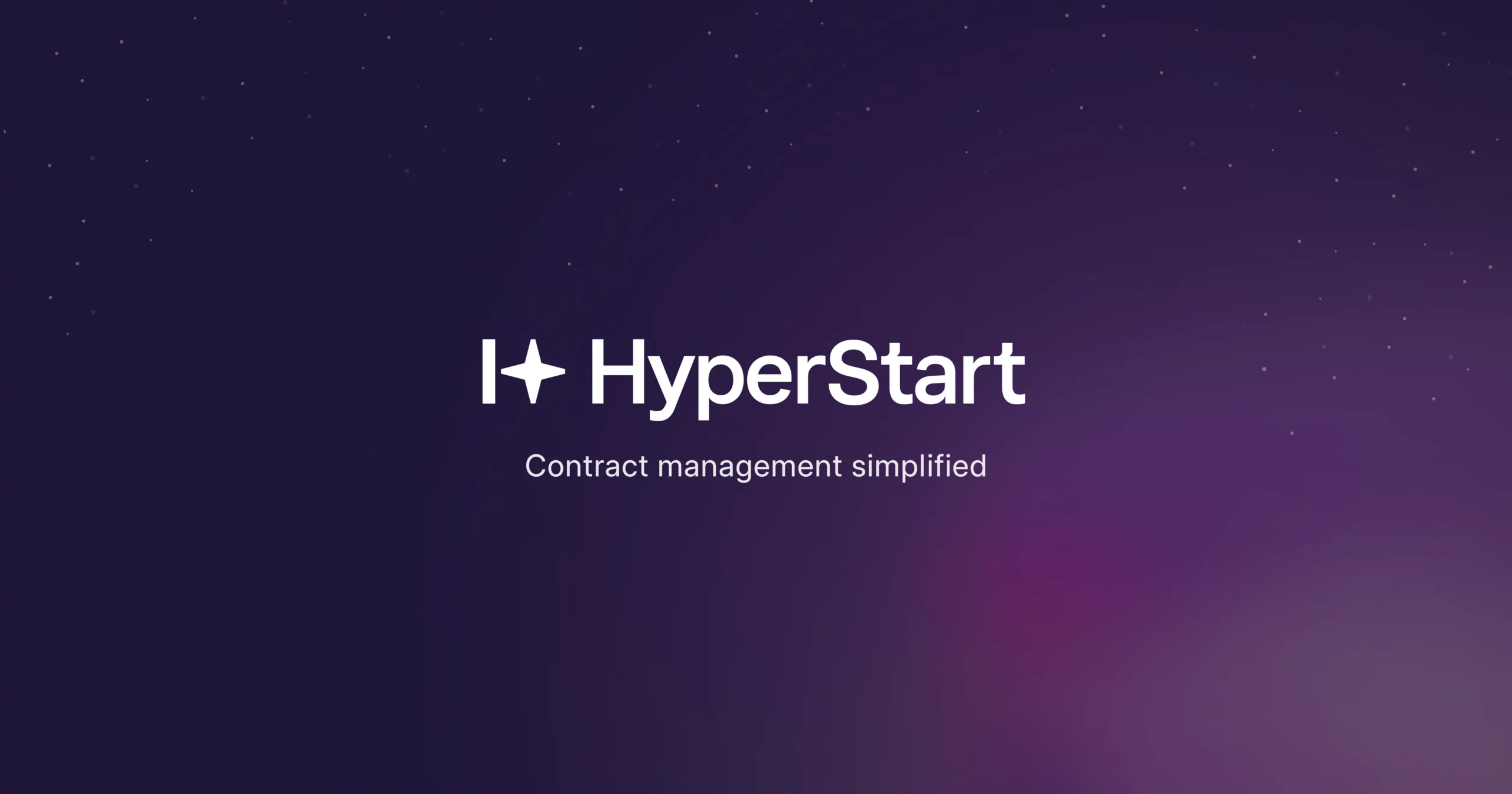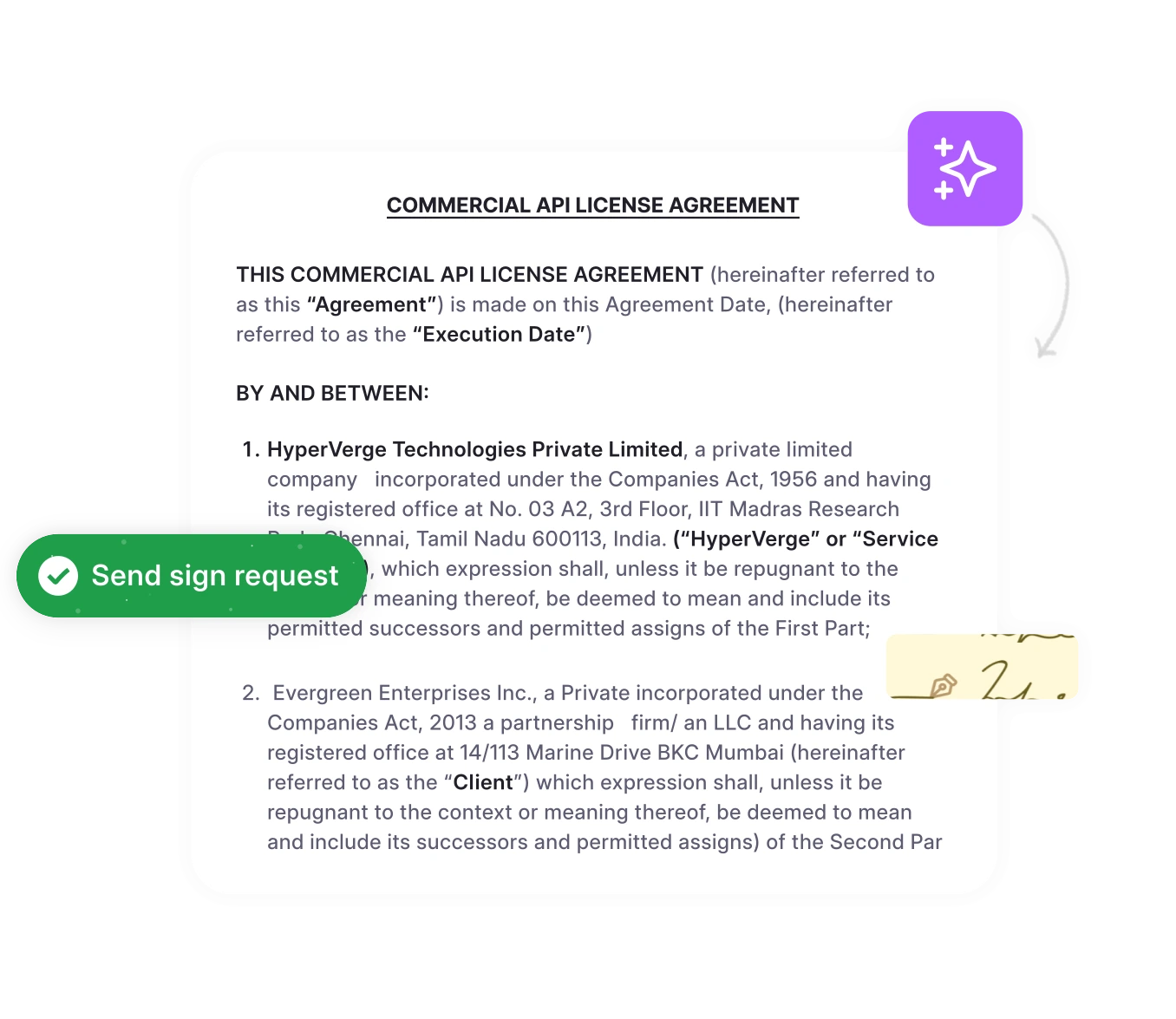Legal teams often navigate deals whose performance depends on uncertain future events, such as regulatory approvals or milestone achievements. Contingent contracts introduce complexities that traditional contract processes struggle to manage effectively.
Note: This guide focuses on legal contingent contracts, not real estate listing contingencies.
A contingent contract is an agreement where contract obligations or performance are triggered by specific, uncertain events. Tracking these triggers, monitoring conditional performance, and managing multiple scenarios can overwhelm manual processes, creating heightened risk and compliance challenges.
In this guide, you’ll learn the legal definitions, industry applications, compliance considerations, drafting best practices, and how AI-powered contract management can transform contingent contracts from a liability into a strategic advantage.
Contingent contract meaning
A contingent contract is a legal agreement where performance obligations depend on the occurrence or non-occurrence of a specific uncertain future event. Unlike absolute contracts, these agreements only become enforceable when predetermined conditions are met or failed.
In practical terms, it’s a risk management tool that links contractual duties to external factors beyond the parties’ direct control, such as regulatory approvals, market conditions, or actions by third parties.
“Contingent means that an event may or may not occur in the future, depending on the fulfillment of some condition that is uncertain.”
Read →
How contingent contracts differ from conditional and absolute contracts
Contingent contracts differ from conditional contracts in scope. While conditional contracts involve parties’ actions (“pay when work is completed”), contingent agreements depend on external uncertain events (“perform if regulatory approval is granted”). This presents unique challenges in terms of compliance management. Legal teams often use the contract compliance management software to overcome such challenges.
Absolute contracts require performance regardless of circumstances, while contingency contracts provide built-in flexibility for uncertain business environments.
When organizations use contingent contracts strategically
Organizations use contingent contracts to manage high-stakes scenarios: mergers pending regulatory approval, supplier agreements dependent on commodity prices, or partnership deals contingent on technology development milestones.
Turn Contract Uncertainty into Strategic Advantage
Gain real-time visibility into contingent obligations and streamline approvals, renewals, and risk management—all in one AI-driven contract lifecycle management system.
Book a DemoWhat are the core elements of valid contingent contracts?
Understanding what makes contingent contracts legally enforceable helps legal teams draft agreements that withstand scrutiny while protecting business interests.
Defining trigger events and collateral conditions
Valid contingent contracts require specific uncertain future events that trigger performance obligations. These contingency contract triggers must be:
Contingent contract examples include software licenses contingent on security audits, manufacturing agreements dependent on raw material availability, or joint ventures awaiting antitrust approval.
4 Legal requirements that every contingent agreement must meet
Every contingent agreement needs fundamental contract elements:
- Mutual consent: Both parties understand the conditional terms
- Valid consideration: Exchange of value remains even if conditions fail
- Legal capacity: Parties authorized to enter binding agreements
- Lawful purpose: Contingent events and performance must be legal
How AI identifies and tracks contingent clauses automatically
Manual tracking of contingent conditions creates compliance gaps. HyperStart’s AI contract analysis automatically identifies contingent clauses, monitors trigger events, and alerts legal teams when conditions activate or expire.
Our AI processes contingency contract language with 94% accuracy, transforming complex conditional terms into manageable workflows that prevent missed deadlines and ensure compliance.
What types of contingent contracts exist across industries?
Contingent contracts serve different business needs across industries, from simple event-triggered agreements to complex multi-condition arrangements that require sophisticated tracking and management.
Four primary contingent contract types
| Type | Trigger | Example | Industry |
| Event-Occurrence | A specific event must happen | Payment upon FDA approval | Pharmaceutical, Medical Device |
| Event Non-Occurrence | Specific event must NOT happen | Bonus if no security breaches | SaaS, Technology Services |
| Timing-Specific | Time-bound conditions | Performance by Q4 or penalty | Manufacturing, Construction |
| Multi-Contingency | Multiple conditions required | Merger pending regulatory + financing | M&A, Joint Ventures |
How different industries apply contingent contracts
Real Estate: Purchase agreements contingent on inspections, financing, or appraisals
Insurance: Coverage activation based on claim verification or risk assessment completion
Financial Services: Investment agreements contingent on market conditions or regulatory approval
SaaS: Software contract management with performance guarantees tied to uptime metrics
Manufacturing: Vendor contracts are dependent on quality certifications or delivery milestones
“These new contractual arrangements combine contingency fees with third-party cover for costs in the event of losing the case… Signing a TPC contract can make filing a suit credible and may increase settlement amounts.”
Transforming manual tracking into automated monitoring
Before: Legal teams manually track contingent deadlines in spreadsheets, missing critical trigger events and compliance dates.
After: AI-powered platforms automatically monitor conditions, send proactive alerts, and ensure contingent agreements never fall through compliance gaps.
What features ensure legal compliance in contingent contracts?
Legal enforceability of contingent contracts depends on precise drafting that eliminates ambiguity while clearly defining conditional performance obligations.
Defining clear and measurable trigger conditions
What is a contingent contract that courts will enforce? One with clear and measurable trigger conditions.
Effective contingency contracts must specify:
- Exact trigger events: “Upon receipt of Series A funding exceeding $5M” rather than “adequate financing secured”
- Performance timelines: Clear deadlines for both condition fulfillment and subsequent obligations
- Measurement criteria: Objective standards that third parties can verify without interpretation
- Notice requirements: How and when parties communicate condition status
Contingent contract examples of poor specificity include vague terms like “reasonable commercial efforts” or “satisfactory performance” that invite disputes.
4 common drafting mistakes that create legal enforcement risks
Legal teams frequently create enforcement risks through:
- Impossible conditions: Requirements that cannot realistically occur
- Contradictory terms: Multiple contingencies that conflict with each other
- Missing consideration: Unclear value exchange if conditions fail
- Jurisdictional gaps: Unclear governing law for multi-state or international agreements
Using AI to ensure compliance and eliminate ambiguity
Manual contract drafting often misses subtle compliance issues. HyperStart’s AI contract review identifies problematic contingent language during drafting, flagging ambiguous terms and suggesting specific alternatives.
Our AI ensures contingent agreements meet enforceability standards while maintaining legal contract management audit trails that demonstrate compliance throughout the contract lifecycle.
What are the advantages and risks of contingent contracts?
Smart organizations use contingent contracts strategically, but success requires understanding both benefits and potential pitfalls before implementation.
Risk mitigation and business flexibility
Risk mitigation: Contingency contracts transfer uncertain risks to parties best equipped to manage them. Technology partnerships become active only after security certifications, protecting both parties from compliance failures.
Performance incentives: Conditional payments motivate desired outcomes. Contract performance management becomes more effective when rewards link directly to measurable results.
Business flexibility: Contingent agreements adapt to changing conditions without full renegotiation. Market volatility, regulatory changes, or competitive pressures trigger automatic contract adjustments.
Complexity and enforceability challenges
Complexity: Multi-condition contingent contracts create administrative burdens. Legal teams struggle to track multiple trigger events across numerous agreements simultaneously.
Enforceability challenges: Ambiguous contingent terms invite disputes. Courts may void contingency contracts with unclear conditions or impossible performance requirements.
Information gaps: Parties often lack visibility into condition status, creating missed deadlines and compliance failures.
How modern CLM platforms address contingent contract complexity
HyperStart transforms contingent contract chaos through automated monitoring. Our contract management dashboard tracks trigger events in real-time, sends proactive compliance alerts, and ensures no contingent conditions fall through administrative cracks.
How to manage uncertainty in contingent contract performance?
Effective contingent contracts require strategic negotiation approaches that balance risk protection with performance incentives.
Negotiation strategies for effective contingencies
Define measurable triggers: Replace subjective terms with objective criteria. Instead of “satisfactory performance,” specify “99.5% uptime over 30-day periods.”
Align incentives: Structure contingencies that benefit both parties. Contingent contract examples include graduated payment scales rewarding early delivery or quality improvements.
Plan for multiple scenarios: Consider what happens if conditions partially meet, exceed expectations, or become impossible to fulfill.
Practical management tools
Scenario planning: Map potential outcomes and corresponding contract obligations before signing. Contract negotiation software helps model different contingency scenarios.
Performance metrics: Establish clear measurement systems for monitoring condition status and contract compliance.
Dispute resolution: Include specific procedures for handling disagreements about whether contingent conditions were met.
What are the best practices for drafting contingent contracts?
Successful contingent contracts require systematic drafting approaches that anticipate complexity while maintaining legal enforceability throughout the contract lifecycle.
Four essential steps for drafting enforceable contingent contracts
Step 1: Define trigger conditions
Specify exact events, dates, and measurable criteria. Use objective language like “upon receipt of written FDA approval” rather than subjective terms like “reasonable regulatory clearance.”
Step 2: Describe performance obligations
Detail what each party must do when conditions activate or fail. Include specific timelines, deliverables, and quality standards for contingent performance.
Step 3: Address partial fulfillment
Plan for scenarios where conditions partially meet requirements. Contingency contract terms should specify graduated responses to incomplete condition fulfillment.
Step 4: Establish dispute resolution
Include specific procedures for disagreements about condition status, with neutral arbitration for complex determinations.
Sample contingency clauses and compliance checklists
- Payment contingency: “Buyer shall pay $500,000 within 30 days following Seller’s receipt of EPA environmental clearance certificate dated no earlier than [specific date].”
- Performance contingency: “Service levels shall increase to 99.9% uptime within 60 days of Customer achieving $10M annual revenue, verified by audited financial statements.”
- Essential checklist: Condition clarity, performance timelines, notice requirements, dispute procedures, governing law, and termination rights.
Automating contingent contract lifecycle management
HyperStart’s contract lifecycle management transforms contingent agreements from administrative burdens into strategic assets. Our 2-7 day implementation enables immediate tracking of multiple contingent conditions across entire contract portfolios.
Contract renewal management automatically monitors contingent terms approaching expiration, preventing missed deadlines that void agreements or trigger penalties.
How does AI-powered contract management handle contingent agreements?
Modern legal teams require intelligent automation to manage contingent contracts effectively, transforming complex conditional terms into streamlined business processes.
Why AI-CLM is essential for contingency complexity
Traditional contingency contract management overwhelms legal teams with manual tracking requirements. AI-powered contract management software identifies contingent clauses during contract ingestion, categorizes trigger events, and creates automated monitoring workflows.
Contingent contract examples become manageable when AI extracts conditional terms, maps trigger events to calendar systems, and alerts stakeholders about approaching deadlines or fulfilled conditions.
HyperStart’s speed and intelligence advantages
80% faster processing: Our AI processes contingent agreements in minutes rather than hours, automatically identifying complex conditional language and creating tracking workflows.
2-7 day implementation: Unlike traditional CLM systems requiring months of setup, HyperStart deploys contingent contract monitoring immediately, providing instant visibility into conditional obligations.
Automated trigger monitoring: Real-time tracking of external events that activate contingent terms, from regulatory approvals to market conditions, ensuring no critical deadlines are missed.
94% accuracy: HyperStart’s AI achieves 94% accuracy in contingent clause identification, built on 1B+ documents processed, eliminating manual review errors that create compliance gaps.
Proven results from legal teams using AI automation
Legal teams report dramatic efficiency improvements when managing contingent contracts with AI automation. One mid-market technology company reduced contingent contract administration from 20 hours weekly to 4 hours, allowing legal professionals to focus on strategic legal operations efficiency rather than manual tracking.
Legal team productivity increases when AI handles routine contingency monitoring, freeing experienced attorneys for complex negotiation and risk analysis that requires human expertise.
Transform contingent contract chaos into strategic advantage
Contingent contracts no longer need to overwhelm legal teams with administrative complexity. When properly structured and managed, contingency contracts become strategic tools that mitigate risk, create performance incentives, and provide business flexibility in uncertain markets.
Key outcomes from effective contingent contract management include operational clarity through defined trigger events, reduced legal risk via precise conditional terms, and strategic advantage through adaptive agreement structures.
HyperStart’s AI-native platform transforms contingent agreements from manual tracking nightmares into automated business processes. The AI identifies key clauses, monitors obligations, and ensures compliance, delivering 80% faster processing than traditional methods.
Legal teams deserve better than spreadsheet-based contingency tracking. Transform your contract management process from chaos to organized operations.










